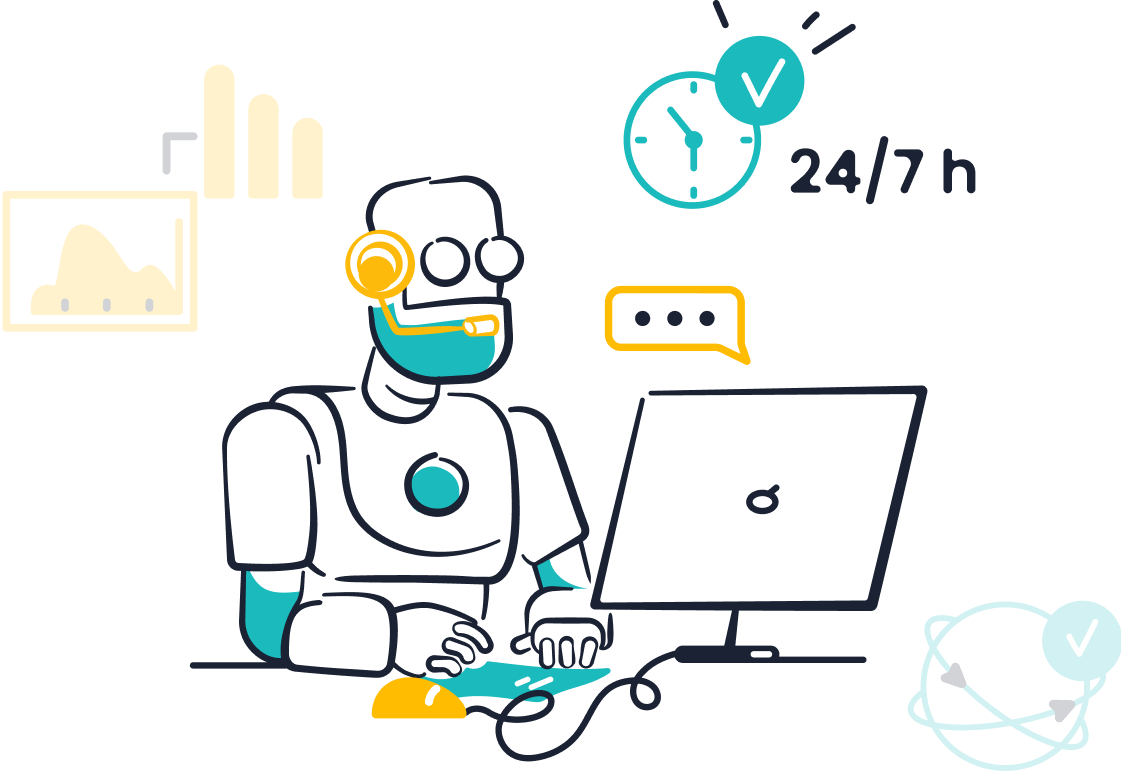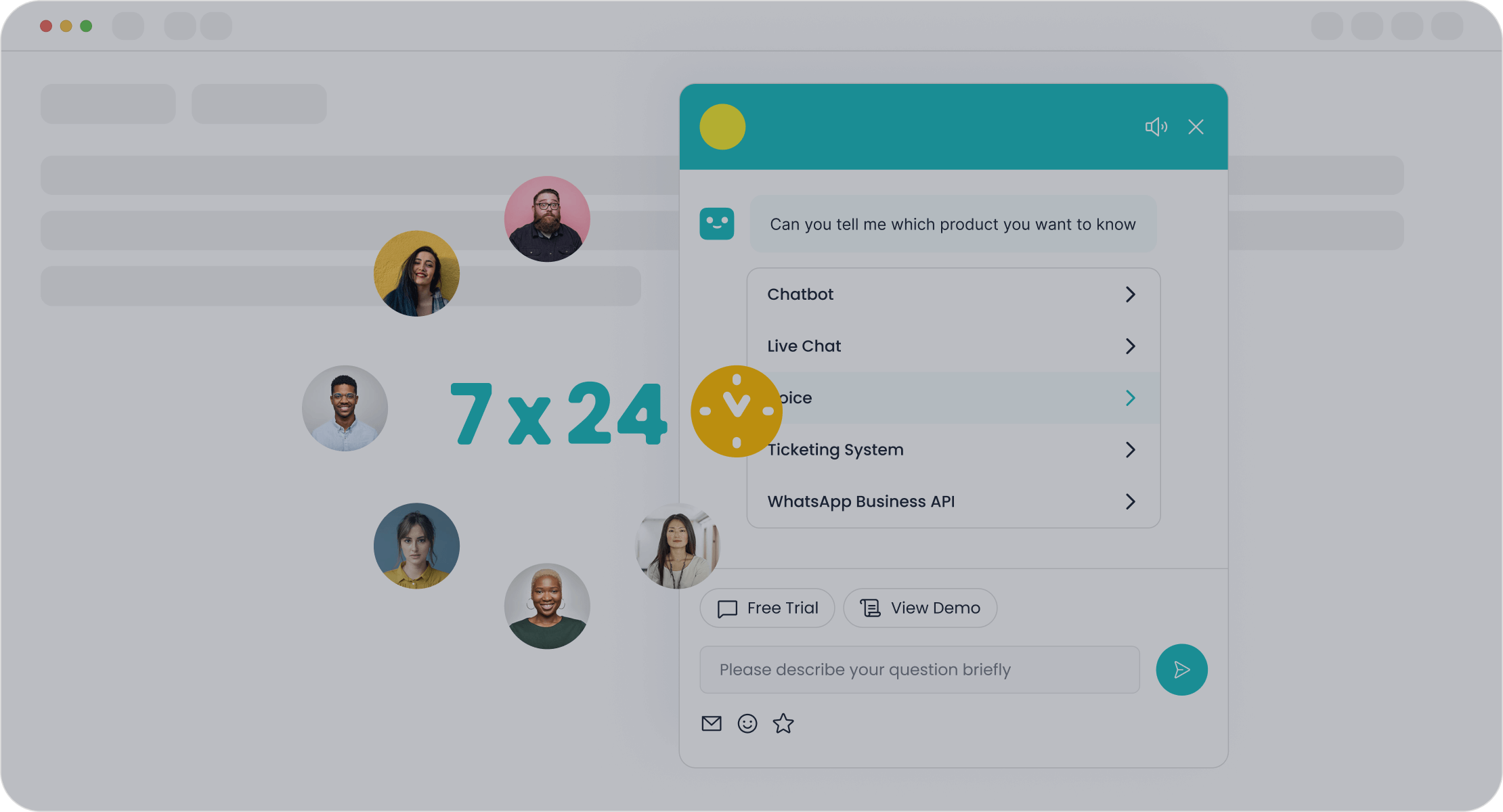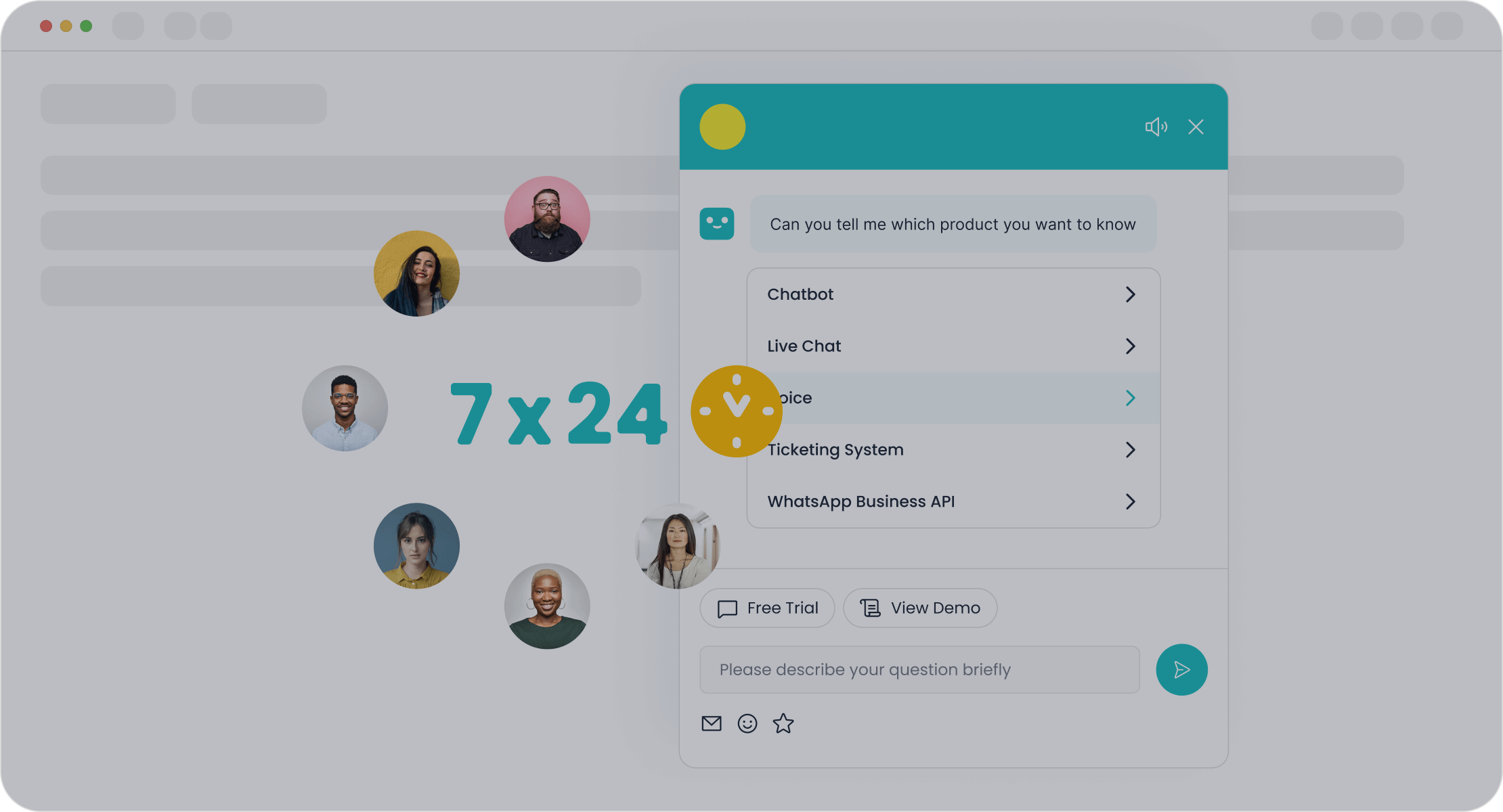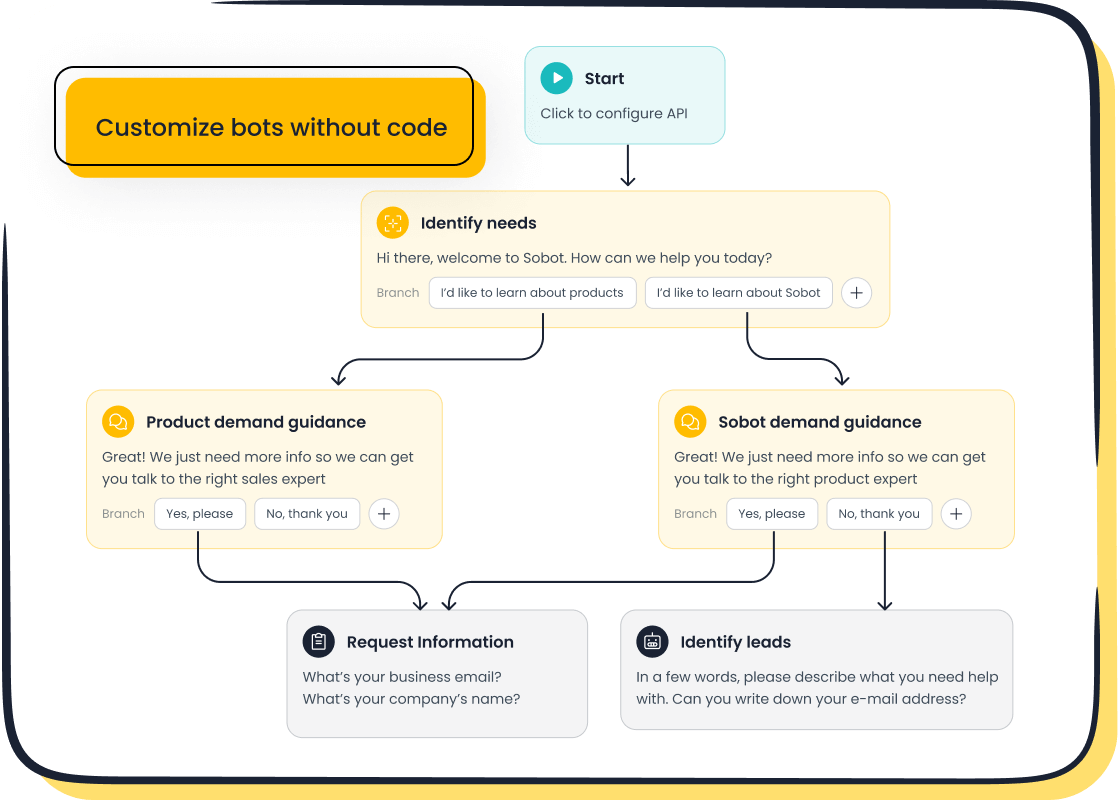Mastering AI Real Time Software for Customer Service Success

AI real-time customer service software is revolutionizing the way businesses engage with their customers, providing faster responses, 24/7 availability, and tailored experiences. According to industry insights, 36% of experts emphasize its importance in delivering round-the-clock support, while 31% highlight its efficiency in automating tasks and saving valuable time. Sobot, a pioneer in AI-driven solutions, offers advanced tools like its Chatbot to help businesses harness these advantages. The Chatbot enhances productivity by 70% and cuts costs by up to 50%. By leveraging Sobot's cutting-edge ai real time customer service software, you can elevate your customer service operations and maintain a competitive edge in today’s dynamic market.
Understanding AI Real-Time Customer Service Software

What Is AI Real-Time Customer Service Software?
Definition and core functionalities

AI real-time customer service software uses artificial intelligence to streamline and enhance customer interactions. It automates repetitive tasks, provides instant responses, and ensures seamless communication across multiple channels. Key components include AI technologies, data analytics, and personalization. These tools analyze customer data, tailor interactions, and optimize workflows. For example, AI chatbots like Sobot's Chatbot operate 24/7, offering multilingual support and resolving queries without human intervention.
| Key Component | Description |
|---|---|
| AI Technologies | Enhance customer support and automate workflows. |
| Personalization | Tailors customer interactions based on data analysis. |
| Data Analytics | Analyzes customer service interactions for real-time query resolution. |
| Integration of AI Tools | Includes chatbots and agent assistance systems for improved efficiency. |
| 24/7 Support | AI agents provide round-the-clock assistance, reducing hold times and increasing satisfaction. |
| Workflow Optimization | AI suggests automation opportunities and streamlines operations for support teams. |
How it enhances customer service operations
AI integration transforms customer service by improving efficiency and accuracy. AI chatbots handle routine inquiries, reducing agent workload and response times. Real-time sentiment analysis identifies customer emotions, enabling proactive solutions. Automated ticketing systems streamline issue resolution, ensuring faster service. These features boost customer satisfaction and create a seamless customer experience.
Benefits of AI in Customer Service
Faster response times and 24/7 availability
AI-powered tools provide instant responses, reducing wait times by 55%. Chatbots like Sobot's operate around the clock, saving businesses an average of 2 hours and 20 minutes daily. This ensures customers receive timely assistance, enhancing their overall experience.
Enhanced personalization and customer satisfaction
AI analyzes customer data to deliver tailored solutions. For instance, 64% of businesses report increased personalization in their interactions. Sobot's Chatbot uses real-time intent assistance to address specific needs, improving customer satisfaction by 48%.
Cost efficiency and operational improvements
AI reduces operational costs by automating repetitive tasks. Businesses save up to 50% on agent expenses with tools like Sobot's Chatbot. Additionally, AI improves productivity by 70%, allowing teams to focus on complex issues and strategic goals.
Applications of AI in Customer Service

Chatbots like Sobot's AI Chatbot
AI chatbots are essential for modern customer service. Sobot's Chatbot handles routine queries, boosts conversions by 20%, and operates across platforms like WhatsApp and SMS. Its no-coding setup makes it accessible for businesses of all sizes.
Real-time sentiment analysis
AI tools analyze customer emotions during interactions. For example, companies use sentiment analysis to detect dissatisfaction and address issues proactively. This improves customer retention and loyalty.
Automated ticketing and routing systems
AI automates ticket creation and routing, ensuring customers connect with the right agents. This reduces average handle time by 27% and enhances resolution rates. Sobot's intelligent routing system exemplifies this efficiency.
Assessing Your Business Needs for AI Implementation
Identifying Customer Service Challenges
Common pain points in customer interactions
Understanding the challenges your business faces in customer service is the first step toward successful AI implementation. Common issues include long wait times, inconsistent responses, and difficulty in providing personalized solutions. A case study highlights how AI-powered tools analyze conversation patterns and sentiments to uncover recurring problems. For example, AI can identify frequent complaints about delayed responses or unclear information, enabling you to address these issues effectively.
| Challenge | Percentage |
|---|---|
| Faster information or answers | 67% |
| Reduce wait times | 62% |
| More accurate data | 53% |
| Create consistent experiences | 42% |
| Personalized responses | 41% |
| Lower operational costs | 28% |

Opportunities for AI to add value
AI offers solutions to these challenges by automating repetitive tasks, providing real-time responses, and enhancing personalization. Tools like Sobot's Chatbot can operate 24/7, reducing wait times and delivering consistent, accurate answers. By integrating AI, you can improve customer satisfaction and streamline operations, making your service more efficient and cost-effective.
Setting Clear Objectives
Defining success metrics for AI implementation
To ensure successful AI implementation, you need clear objectives. Metrics such as response time reduction, improved customer satisfaction scores, and cost savings can help measure success. Experts recommend tracking efficiency, accuracy, and financial impact metrics. For instance, Sobot's Chatbot improves productivity by 70%, a measurable indicator of its effectiveness.
| Metric Category | Examples of Metrics |
|---|---|
| Efficiency Metrics | Throughput, resource utilization rates, reduction in human intervention |
| Accuracy Metrics | Percentage of correct predictions in models, such as credit scoring accuracy |
| Performance Metrics | System uptime, response times, error rates, quality of user interactions |
| Financial Impact Metrics | Return on investment (ROI), cost savings, revenue generated from AI-enhanced products or services |
Aligning AI goals with business strategies
Your AI goals should align with your overall business strategies. For example, if your focus is on improving customer retention, AI tools like Sobot's Chatbot can enhance personalization and create consistent experiences. This alignment ensures that AI contributes directly to your business growth.
Evaluating Current Systems
Assessing existing tools and infrastructure
Before implementing AI, evaluate your current systems. Identify gaps in your workflows and assess whether your tools support scalability and ease of use. For instance, Sobot's solutions integrate seamlessly with existing platforms, ensuring a smooth transition to AI-powered customer service.
Ensuring compatibility with AI solutions
Compatibility is crucial for avoiding inefficiencies. Check if the AI solution can integrate with your existing systems and adapt to future updates. Sobot's Chatbot, for example, offers omnichannel support and a no-coding setup, making it highly adaptable to various business needs.
Choosing the Right AI Tools for Real-Time Customer Service
Key Features to Consider
Scalability and flexibility
When selecting AI tools, scalability and flexibility are essential. These features allow your business to adapt to changing customer needs and handle growing volumes of inquiries. For example, flexible AI tools like Sobot's Chatbot can operate across multiple channels, ensuring seamless customer interactions. A flexible approach also improves efficiency, reduces costs, and provides a competitive edge.
| Benefits of a Flexible Approach | Description |
|---|---|
| Improved Customer Experience | Quickly respond to changing customer needs. |
| Increased Efficiency | Streamline operations and reduce costs. |
| Competitive Advantage | Stay ahead of competitors with innovation. |
Integration with existing systems
AI tools must integrate smoothly with your current infrastructure. Poor integration can lead to inefficiencies and increased costs. Sobot's Chatbot offers omnichannel support and a no-coding setup, making it easy to implement without disrupting your workflows. This ensures your team can focus on delivering excellent customer service.
User-friendly interfaces
A user-friendly interface simplifies the adoption of AI tools. Sobot's Chatbot features a point-and-click design, allowing even non-technical users to set up and manage workflows. This ease of use reduces training time and ensures your team can quickly leverage the tool's full potential.
Exploring Sobot's AI Solutions

Overview of Sobot's Chatbot and its advantages
Sobot's AI-powered chatbots stand out for their efficiency and adaptability. They handle routine queries 24/7, reducing agent workload and cutting costs by up to 50%. These chatbots also boost conversions by 20% through proactive messaging and real-time assistance. With multilingual support and seamless integration, Sobot's Chatbot ensures a personalized experience for every customer.
Real-world success stories, such as Agilent
Agilent, a leader in life sciences, achieved remarkable results with Sobot's solutions. By integrating Sobot's Chatbot, Agilent increased customer service efficiency sixfold and reduced costs by 25%. The chatbot handled routine inquiries, allowing agents to focus on complex issues. This led to a 95% customer satisfaction score, showcasing the transformative power of Sobot's AI tools.
Conducting a Cost-Benefit Analysis
Balancing budget with functionality
Investing in AI tools requires careful consideration of costs and benefits. Tools like Sobot's Chatbot save up to 50% on agent expenses while improving productivity by 70%. These savings make AI a cost-effective solution for businesses of all sizes.
Long-term ROI and efficiency gains
AI tools deliver significant long-term ROI. For instance, Sobot's Chatbot reduces inbound discussion volume by 20% and increases customer satisfaction rates to 95%. These metrics highlight the efficiency and financial benefits of adopting AI-powered solutions.

Integrating AI into Customer Service Workflows

Developing a Comprehensive Plan
Setting timelines and milestones
A well-structured timeline ensures smooth AI integration. Start by defining the project scope and objectives. Establish clear milestones to track progress and set realistic deadlines for each phase. For example, allocate time for selecting tools, training staff, and testing solutions. Unity, a company that implemented AI for customer service, achieved significant cost savings by adhering to a structured timeline. Their AI agent deflected 8,000 tickets, saving $1.3 million. Following a similar approach can help you stay on track and achieve measurable results.
Assigning roles and responsibilities
Assigning specific roles ensures accountability. Identify team members responsible for managing AI tools, monitoring performance, and addressing challenges. For instance, designate a project manager to oversee the integration process and a technical lead to handle system compatibility. Clear role distribution prevents confusion and keeps the project aligned with your goals.
Training Your Team
Educating staff on AI tools like Sobot's Chatbot
Training your team is essential for maximizing the benefits of AI tools. Sobot's Chatbot, with its user-friendly interface, simplifies this process. Use AI-driven training programs to provide personalized learning experiences. These programs offer real-time feedback and monitor progress, ensuring your team gains the necessary skills. For example, AI analytics can identify areas where additional training is needed, improving knowledge retention and engagement.
| Evidence Type | Description |
|---|---|
| Personalization | Tailored training enhances engagement and effectiveness. |
| Real-time Feedback | Instant feedback helps identify and address skill gaps. |
| Data Analytics | Monitors progress and adjusts training for better outcomes. |
Encouraging collaboration between AI and human agents
AI tools like Sobot's Chatbot excel at handling routine tasks, but human agents remain vital for complex issues. Encourage collaboration by integrating AI into workflows that complement human expertise. For example, Esusu uses AI to summarize support tickets, enabling agents to focus on high-priority tasks. This synergy improves efficiency and ensures a seamless customer experience.
Testing and Launching AI Solutions
Running pilot programs for Sobot's Chatbot

Pilot programs help you evaluate AI performance before full-scale implementation. Begin by selecting a specific area for automation, such as handling FAQs. Deploy Sobot's Chatbot on a small scale and monitor its impact. For instance, measure response times and customer satisfaction rates. Use these insights to refine the chatbot's functionality.
Gathering feedback and refining processes
Feedback is crucial for optimizing AI solutions. Collect input from both customers and staff to identify areas for improvement. Analyze this data to make necessary adjustments. For example, if customers report unclear responses, update the chatbot's knowledge base. Refining processes ensures your AI tools deliver consistent and accurate results.
Monitoring, Optimizing, and Addressing Ethical Considerations
Monitoring AI Performance
Key metrics to track for customer service success
Tracking the right metrics ensures your AI real-time customer service software delivers optimal results. Focus on indicators that measure efficiency, customer satisfaction, and system performance.
| KPI | Description |
|---|---|
| Time savings | Tracks how much time AI saves by automating tasks. |
| Customer satisfaction | Measures improvements in customer experience after AI implementation. |
| Task success rate | Indicates how effectively AI meets user needs. |
| User retention rate | Shows how many customers continue using AI-powered services. |
| Latency | Monitors AI response times to ensure quick interactions. |
These metrics help you evaluate the impact of tools like Sobot's Chatbot, which improves productivity by 70% and reduces costs by up to 50%.
Tools for performance monitoring
Several tools can help you monitor AI performance effectively:
- CallMiner: Analyzes conversations to improve service quality.
- Talkdesk: Provides real-time dashboards for tracking KPIs like customer satisfaction.
- Nice inContact: Offers insights into agent productivity and customer engagement.
Using these tools alongside Sobot's analytics features ensures you stay informed about your AI system's performance.
Optimizing AI for Better Results
Regular updates and maintenance
AI systems require regular updates to stay effective. Keep your AI real-time customer service software aligned with evolving customer needs by updating its knowledge base and algorithms. For example, Sobot's Chatbot allows easy optimization through its reporting tools, ensuring it remains accurate and efficient.
Leveraging customer feedback for continuous improvement
Customer feedback is a goldmine for refining AI tools. Use methods like A/B testing and beta programs to evaluate updates.
Customer satisfaction, task success rate, and user retention rate are key metrics for assessing the effectiveness of updates.
For instance, Sobot's Chatbot integrates feedback seamlessly, enabling businesses to address specific customer concerns and improve service quality.
Ethical Considerations in AI Use
Ensuring transparency and fairness
Transparency builds trust in AI systems. Implement auditability checks to document AI decisions and ensure fairness through bias audits. These practices ensure your AI tools, like Sobot's Chatbot, provide equitable service to all customers.
Protecting customer data and privacy
Data security is critical in AI-powered customer service. Adhere to compliance standards like GDPR to safeguard customer information. Sobot prioritizes privacy by offering secure, scalable solutions that protect sensitive data while delivering exceptional service.
Communicating AI Use to Customers
Building trust through transparency
Transparency plays a vital role in gaining customer trust when using AI real-time customer service software. You should clearly inform your customers whenever AI tools, like chatbots, are involved in their interactions. Over 90% of businesses and consumers agree that disclosing AI usage in client care builds trust. This openness reassures customers and fosters confidence in your services.
To further enhance trust, consider implementing transparent AI decision-making processes. For example, explain how your AI chatbot determines responses or routes queries. Customers appreciate clarity, especially when AI handles their concerns. Additionally, shoppers are more likely to choose companies that oversee AI usage responsibly. You can achieve this by combining AI tools with human oversight. In fact, 77% of companies and 73% of buyers prefer AI systems monitored by humans. This hybrid approach ensures accountability and improves customer satisfaction.
Highlighting the benefits of AI-powered solutions
Educating your customers about the advantages of AI-powered solutions can strengthen their confidence in your services. AI real-time customer service software offers faster responses, personalized interactions, and 24/7 availability. For instance, Sobot's Chatbot operates around the clock, providing instant assistance in multiple languages. It handles routine queries efficiently, allowing human agents to focus on complex issues.
Highlighting these benefits can help customers see the value of AI in improving their experience. For example, AI tools reduce wait times by 55%, ensuring quicker resolutions. They also enhance personalization by analyzing customer data to deliver tailored solutions. Sharing these facts demonstrates your commitment to providing exceptional service.
By communicating the transparency and benefits of AI, you can build trust and loyalty among your customers while showcasing the transformative power of AI real-time customer service software.
Mastering AI real-time customer service software involves several essential steps. Start by ensuring high-quality data for accurate AI performance. Combine human expertise with AI capabilities to create seamless customer experiences. Adopt a flexible integration approach to adapt to evolving technologies.
| Key Steps | Description |
|---|---|
| Data Quality | High-quality data ensures accurate AI performance and boosts customer satisfaction. |
| Human-AI Collaboration | Combining human strengths with AI enhances service quality and efficiency. |
| Flexible Integration | A flexible approach supports continuous improvement and technological adaptation. |
Continuous monitoring and optimization are vital for long-term success. Regularly update AI tools like Sobot's Chatbot to align with customer needs. Use feedback to refine processes, ensuring relevance and adaptability over time. For example:
- User feedback improves AI systems, enhancing satisfaction and engagement.
- Metrics like error reduction and ROI validate AI's impact on workflows and finances.
By prioritizing ethical practices, such as transparency and data privacy, you build trust with your customers. Explore Sobot's solutions today to take the first step toward AI-powered customer service success.
FAQ
What is AI real-time customer service software, and how does it work?
AI real-time customer service software uses artificial intelligence to automate and enhance customer interactions. It handles tasks like answering FAQs, analyzing customer sentiment, and routing tickets. Tools like Sobot's Chatbot operate 24/7, providing instant, multilingual support while reducing costs and improving efficiency.
How can AI tools improve customer satisfaction?
AI tools analyze customer data to deliver personalized experiences. For example, Sobot's Chatbot uses real-time intent assistance to address specific needs. This approach improves satisfaction by 48%, as customers receive faster, more accurate responses tailored to their preferences.
Is Sobot's Chatbot easy to set up?
Yes, Sobot's Chatbot features a no-coding, point-and-click interface. You can design workflows and deploy the chatbot without technical expertise. Its user-friendly setup ensures businesses of all sizes can quickly integrate it into their customer service operations.
Can AI tools like Sobot's Chatbot save money?
Absolutely! Sobot's Chatbot reduces costs by up to 50% by automating routine tasks and triaging queries. This allows you to allocate resources more effectively, focusing on complex issues while maintaining high-quality service.
How does Sobot ensure data security in its AI solutions?
Sobot prioritizes data security by adhering to global compliance standards like GDPR. Its AI tools, including the Chatbot, offer secure, scalable solutions that protect customer information while delivering exceptional service. This commitment builds trust and ensures privacy.
See Also
Enhancing Efficiency With AI-Driven Customer Service Solutions
Navigating the World of AI in Call Center Software
Transforming Customer Support Through AI Service Agents